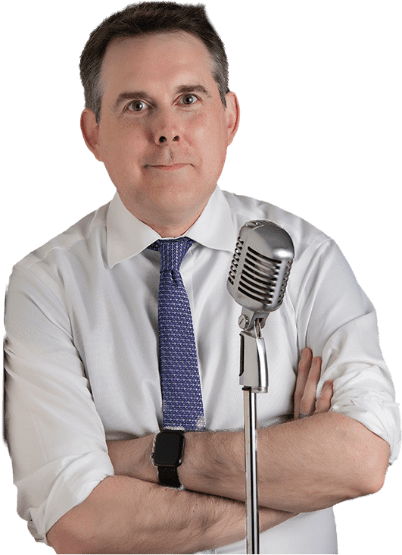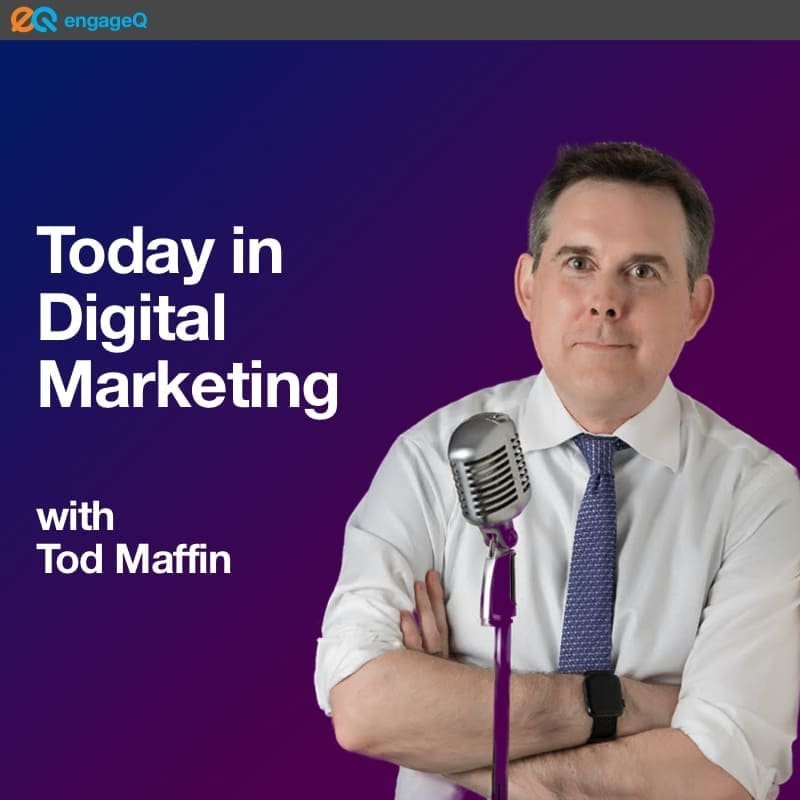There are a lot of moving pieces in selling something — the ad, of course, but arguably the more important piece is what happens after the click. For many brands, they’re not trying to get a purchase, they want completion of a lead form. And how that landing page is designed can make or break a campaign.
This week, our podcast host Tod Maffin spoke with Bob Sparkins of the popular landing page builder Leadpages and asked him for all the secrets — what the “perfect” landing page looks like.
Table of Contents
BOB: First of all, the perfect landing page has to be able to communicate quickly to the perfect person on the other side of the computer. So if you have a mismatch between what you’re saying and who’s seeing it, that’s obviously going to hurt you.
Hero Image
It needs to click within two seconds. That means a great hero image.
A great hero image means something that relates to the viewer, not to the expert who’s selling something or to the company. Most companies make the mistake of showcasing their brand with a huge logo, or with a picture of their team, or whatever. Instead, the perfect hero image is going to reflect the positive outcome that the person who is viewing that page is going to have from whatever they get from your offer.
TOD: Can you give me an example? Let’s say that it’s a supplement product or something like that; what would be a good hero image for that?
BOB: Somebody who is in shape, or preferably two or three people that are in shape, they’re enjoying their life, they’re likely outdoors, or they have energy in some particular way that the supplements assumingly have given them.
It’s not going to be a big picture of the bottle; it’s not going to be somebody who’s tired and lethargic. It’s the outcome that people will see, not the state of their current existence.
The Headline
BOB: Perfect length is going to be seven to 12 words. Now, obviously, a sub headline can be you know, 15 to 30 words, preferably short as well. Think about writing from that seventh to ninth grade level
It’s about emotional copy that speaks to the desired result of the person on the other side; it’s not “I have this product for sale”… [Instead, it’s] “You want the end result, then keep reading.”
Body Copy
TOD: Okay, so let’s talk body copy. There’s really two schools of thought, I think. There’s the short and punchy, and then there’s the Ogilvy method, which is to just dump everything into a seemingly endless long page. At Leadpages, you’ve got access to a ton of data. Which of those two performed better?
BOB: We always find that the shorter the landing page outperforms the longer landing pages. As far as products that are under $200… people don’t need that much information to decide.
If you have a $1,000 or $5,000 product, then you’re going to need to explain a little bit more about why the value of what you offer is worth the price that you’re paying….
If you are a really good copywriter and can sit to tell a good story, then you’re able to tell that over a longer period of time, but always try to trim always try to concise.
The Form
TOD: Let’s talk about the form. Best practices have been: the fewer the number of fields, the better. Does that still hold true? What’s the tipping point where the number of people who don’t complete it starts to rise? How many fields is that tipping point?
BOB: From one field to two fields is a minor drop off. From two to three fields, a little bit more. Three to four drops off significantly.
So what I ask your readers to do is think about what’s the most critical information that they need in order to continue the conversation. And what’s the most obvious information that a person on the other side would be willing to give to you.
If you are a real estate agent and you’re doing a home value quote or some kind, it makes sense to have an address right or a zip code at least, it also makes sense to have a phone number.
But if you’re asking people for an email to get to download a checklist or a guide of some kind, then an email alone is fine.
The other side of this though, is if you want a more qualified lead, then feel free to ask for more information just to weed out some of the tire kickers that might otherwise be looking at your information.
But even if you’re selling something on your landing page, consider if you need their shipping address or can you just get away with their zip code in order to charge appropriately the credit card?
A lot of people do ask for way too much information and usually you can have people opt in or buy something with as minimal information as possible. Then on a second or third communication, say, “Hey, I’d love to get a little bit more information about you or your business,” or your company or whatever the case may be. And you send them to a subsequent form for more progressive profiling, but shorter, the better.
The Button
TOD: Finally, what I think is kind of the Dark Horse of landing pages: the button. What is the right colour of the button?
BOB: The colour [should] contrast with the background and shouldn’t be jarring, but it should stand out clearly.
We do find different industries use different colours, effectively blues and darker greens for SaSS, oranges and yellows and reds for a little bit more emotionally driven copy.
But the most important thing is that it stands out. So if you have a colour that’s part of your brand, be consistent and keep using that same colour.
Make sure, though, that that colour is not used all the way throughout the page, except for the call to action. And if you have more than one call to action button, which I wouldn’t recommend most people do, but if you’re skilled at it, make sure it has no colour, and use a line around a line button instead of a flat button.
Bob Sparkins is a marketing manager at Leadpages — their site is leadpages.com. They also have a podcast called The Lead Generation podcast.














